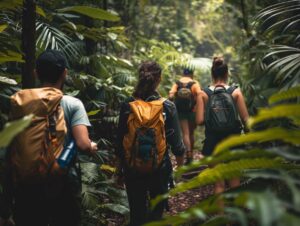
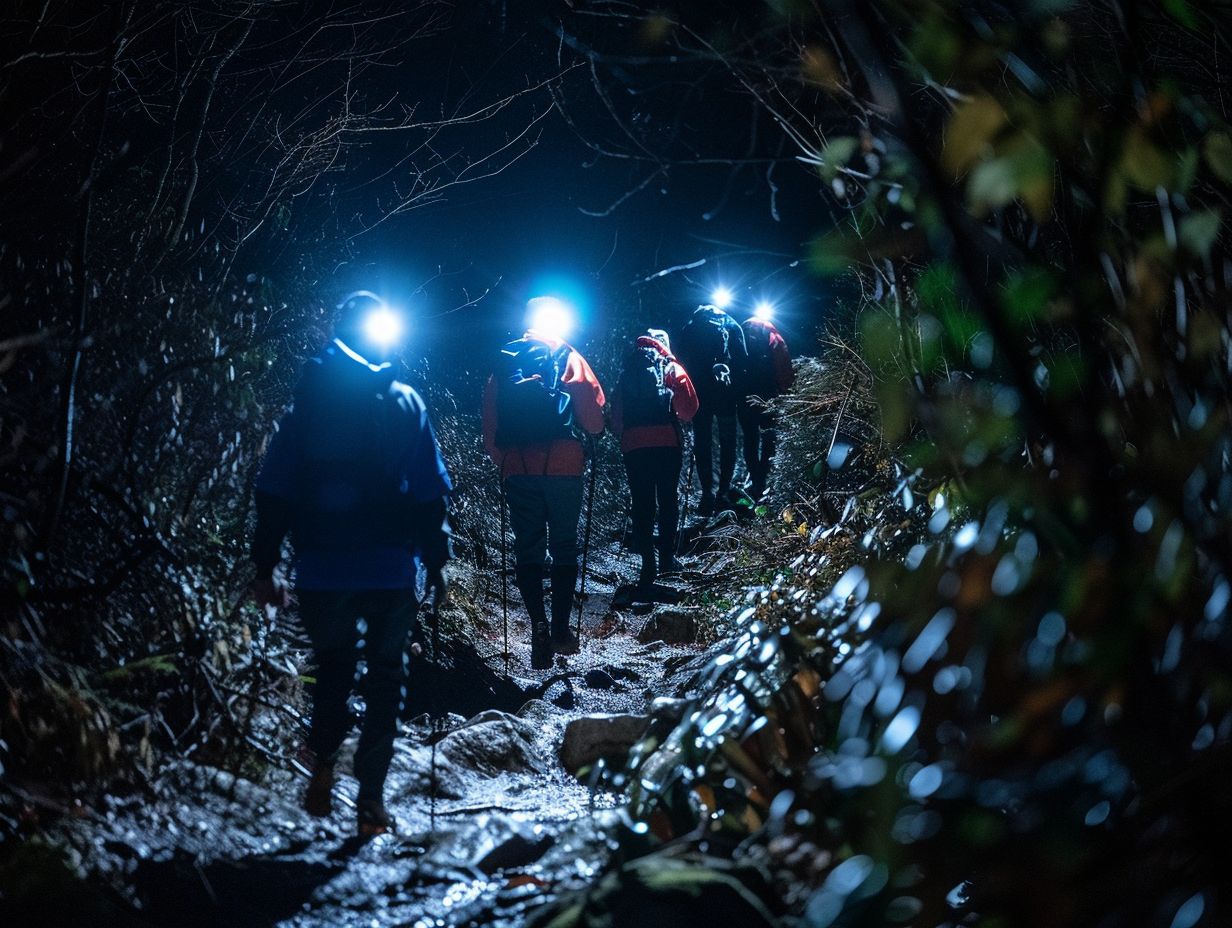
Vaibhav
- Categories: Hiking
Are you looking to add excitement to your hiking adventures? Night hiking might just be the perfect solution.
We will explore the benefits of going on a night hike, how to prepare for one, and most importantly, how to stay safe while exploring the trails after dark.
From cooler temperatures and unique experiences to stargazing and avoiding crowds, night hiking offers a new perspective on the great outdoors.
So grab your gear and get ready for an unforgettable nighttime adventure!
Key Takeaways:

- Experience a unique side of nature by night hiking, with cooler temperatures, star gazing and avoiding crowds as added bonuses.
- Before embarking on a night hike, make sure to carefully select a trail, check the weather, and pack appropriate gear such as a map and compass.
- Stay safe during a night hike by using a headlamp or flashlight, staying on the trail, being aware of wildlife, and staying hydrated and nourished.
How to Prepare for a Night Hike?
Thorough preparation is paramount for a successful night-time hiking expedition, involving the choice of a suitable trail, a thorough evaluation of current weather conditions, careful packing of necessary equipment, and the enforcement of necessary safety measures.
1. Choose the Right Trail
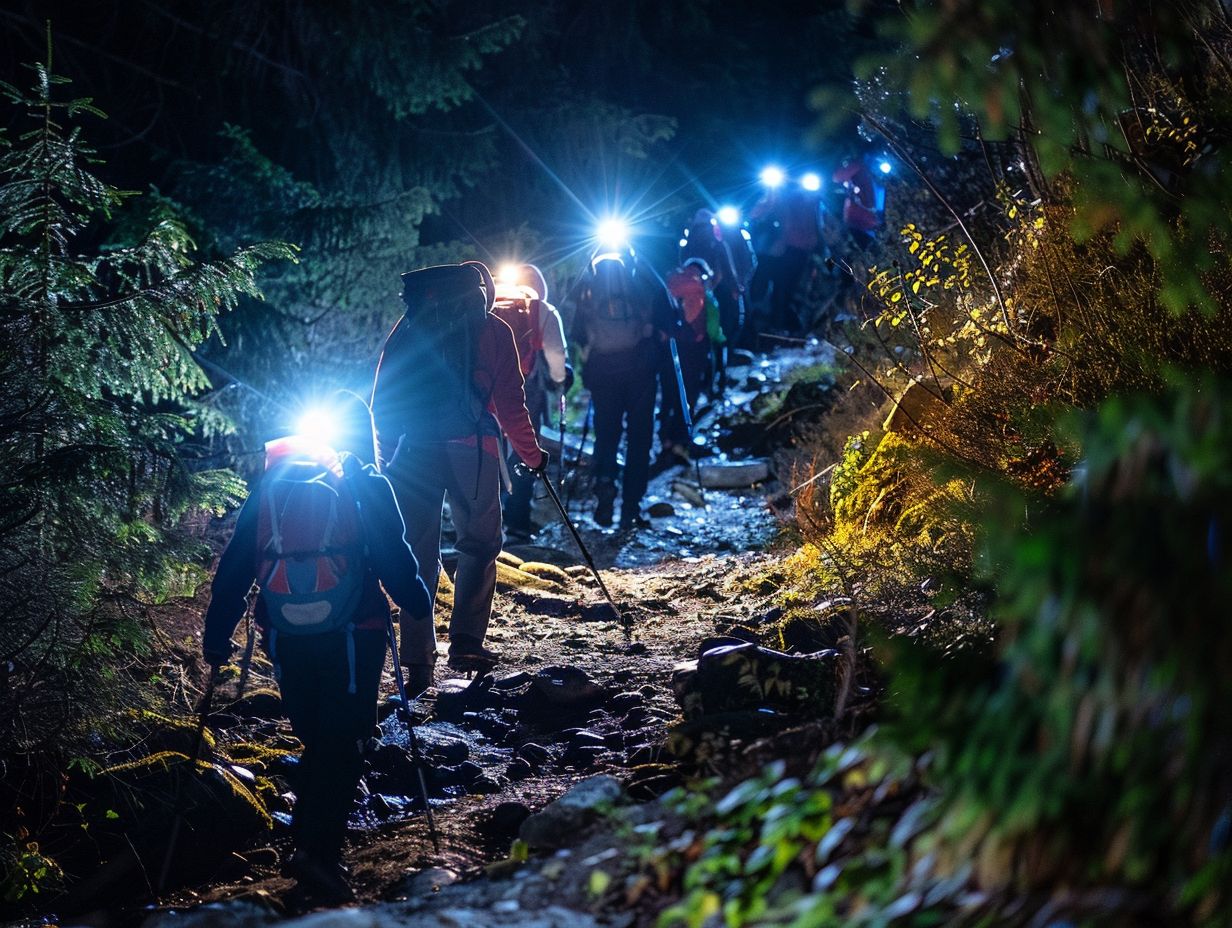
Selecting the appropriate trail is crucial for night hiking, and it is recommended to adhere to familiar trails with established trail conditions.
An essential consideration in trail selection for night hiking is to take into account its topographical characteristics, including steep slopes, rocky paths, or narrow passages that may present challenges in low-light conditions.
Having a clear understanding of the trail’s elevation changes and identifying potential hazards like loose rocks or slippery sections is vital for ensuring a safe and enjoyable night hike.
Furthermore, familiarity with the trail aids in identifying suitable resting spots, viewpoints for stargazing, and areas to avoid after nightfall. By opting for a trail that aligns with one’s expertise and comfort level, the overall night hiking experience can be significantly enhanced.
2. Check the Weather
It is essential to check the weather conditions before commencing a night hike to ensure the safety of trail conditions and to prepare for any unforeseen weather alterations. Utilising weather websites or mobile applications that offer real-time updates is a simple method to stay informed about the weather.
Additionally, consulting multiple sources is advisable to gain a more comprehensive understanding of the impending weather conditions. In case of unexpected weather fluctuations during the hike, it is crucial to have essential equipment such as waterproof clothing, additional layers, and a dependable light source.
Always communicate your hiking itinerary and estimated return time to a designated individual to facilitate the dispatch of assistance if necessary.
3. Pack Proper Gear and Equipment
It is imperative to adequately equip oneself and verify equipment readiness for night hiking. This includes donning multiple layers of clothing and ensuring the possession of a dependable torch or head torch.
Additionally, it is essential to possess a trail map, a fully charged mobile phone, spare batteries for the light source, a comprehensive first aid kit, and an ample supply of water and snacks.
Furthermore, selecting appropriate footwear with reliable grip is crucial for successfully navigating the frequently irregular terrain encountered during night hikes. Anticipating fluctuating weather conditions by carrying a waterproof coat and additional socks can significantly contribute to ensuring a safe and enjoyable hiking experience.
4. Bring a Map and Compass
The utilisation of a map and compass is imperative during night hiking excursions to facilitate navigation and ensure adherence to the intended course, particularly in unfamiliar terrains.
The use of a map serves the purpose of pre-planning the route, enabling the marking of significant waypoints and reference points to facilitate efficient navigation through the darkness. Conversely, a compass plays a crucial role in orienting oneself and determining the required direction of travel.
The identification of key topographical features on the map, such as streams or distinctive tree formations, allows for cross-referencing with the actual terrain, aiding in maintaining orientation and mitigating the risk of becoming disoriented.
The synergistic employment of these navigational tools provides the hiker with the confidence to traverse the landscape securely and enjoy the night hiking experience without compromising safety.
How to Stay Safe While Night Hiking?
Ensuring safety during night hiking requires the observation of a range of safety measures, the use of appropriate lighting sources, vigilance regarding potential wildlife encounters, and preparedness for unexpected emergency situations.
1. Use a Headlamp or Torch
The use of a head torch or torch is essential for maintaining visibility and facilitating navigation during night hikes, enabling individuals to illuminate the trail and identify potential obstacles.
When faced with the choice between a head torch and a torch, it is advisable to consider the requisite intensity and focus of the light. Head torches, being hands-free, are particularly suited for activities necessitating continual motion, whereas torches offer greater versatility in light direction.
To ensure sustained visibility throughout the hike, selecting a light source with adjustable brightness settings is recommended. Furthermore, it is imperative to carry spare batteries or a power bank to guarantee the reliability of your light source.
Regularly inspecting and cleaning the light source is also crucial to prevent the accumulation of dust or dirt, which may compromise its operational efficiency.
2. Stay on the Trail
Maintaining adherence to established paths is imperative during night hiking to prevent disorientation and ensure secure navigation.
When traversing the nocturnal wilderness, deviating from designated trails can result in confusion and potential hazards. It is essential to acknowledge that what is recognisable terrain during daylight hours can become unfamiliar and perilous under the shroud of darkness.
To counteract these inherent dangers, hikers may employ technologies such as GPS devices or smartphone applications featuring offline maps to maintain their course.
Furthermore, it is essential to equip oneself with a dependable headlamp or torch to illuminate the pathway forward and pre-empt any unexpected obstacles. These strategic measures are fundamental for facilitating a successful and secure nighttime hiking expedition.
3. Watch Out for Wildlife
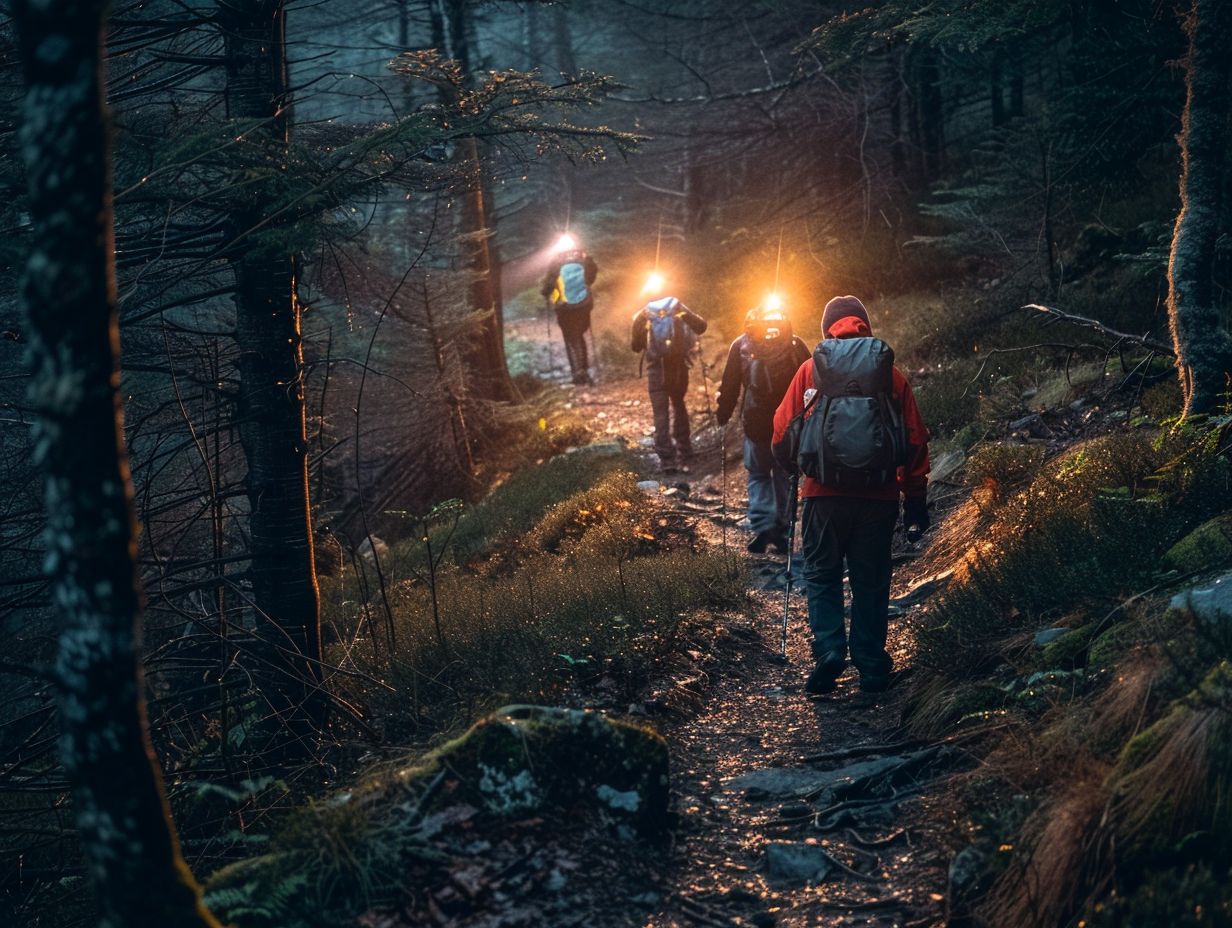
Vigilance regarding wildlife is essential when engaging in nocturnal hikes, as encounters with animals that are active at night, such as owls and possums, can present both captivating and demanding situations.
When coming into contact with wildlife, it is imperative to maintain a safe distance and observe them from a distance to prevent any disruption to their natural behaviours.
Should an encounter with an owl or possum occur, it is advisable to avoid sudden movements or loud noises that could startle them. Demonstrating respect for their environment and acknowledging their significance in the ecosystem is crucial.
Acquainting oneself with the specific habitats of nocturnal animals and refraining from approaching too closely, particularly during their active periods, is of utmost importance. Through remaining well-informed and exercising caution, one can admire these creatures while prioritising personal safety.
4. Stay Hydrated and Nourished
Maintaining adequate hydration and nourishment is imperative for sustaining energy levels and regulating body temperature during nocturnal hikes.
It is essential to carry a sufficient supply of water and snacks to ensure ongoing hydration and sustenance throughout the entirety of the hike. Incorporating regular short breaks into the trek is recommended to facilitate effective pacing, allowing for opportunities to rest and refuel.
In preparation for a night hike, it is beneficial to pack easily consumable, high-energy snacks like nuts, granola bars, and dried fruits. Consistently consuming water throughout the hike, irrespective of thirst cues, is vital to prevent dehydration. Additionally, wearing moisture-wicking attire and a hat can aid in managing body temperature and mitigating the risk of overheating.
Tips for an Exciting Night Hike
Optimise your nocturnal hiking excursion with the following guidance, which aims to cultivate a harmonious blend of exploration, serenity, and safety to enrich your expedition.
1. Go with a Group
Opting to hike in a group presents an excellent opportunity to enhance safety and collectively partake in the night hiking experience, particularly beneficial for parents hiking with children.
- When embarking on a group hike, individuals not only benefit from the security of numbers but also gain access to a wealth of collective knowledge and skills possessed by their companions.
- The exchange of outdoor expertise in areas such as navigation, first aid, and emergency readiness can prove to be invaluable while navigating trails.
Exploration of the wilderness in the company of others introduces an additional layer to the adventure – fostering camaraderie, sharing moments of achievement, and collectively reveling in the splendour of nature amplifies the richness and overall fulfilment of the experience.
2. Take breaks to enjoy the scenery
Engaging in brief moments of leisure, such as stargazing and listening to nocturnal sounds, enhances the relaxation and sense of wonder experienced during a night hike.
Intermittent pauses taken during the hike allow participants to fully engage with the natural splendour that envelops them. The celestial canopy, bedecked with shimmering stars, provides a captivating exhibition that is likely to evoke admiration and introspection.
By seizing the opportunity to acknowledge the serenity of the surroundings and the orchestration of nocturnal sounds, hikers can forge a deeper bond with the environment and discover a profound sense of tranquillity amidst the wilderness. These brief interludes not only revitalise the body but also nourish the spirit, rendering the night hike an exceptionally enriching endeavour.
3. Bring a Camera
The inclusion of a camera during a night hike enables individuals to capture the distinct moments and landmarks encountered, thereby preserving memories of the adventure.
A fundamental recommendation for night photography involves utilising a tripod to ensure stability and mitigate the risk of producing blurry images in low-light conditions.
The adjustment of the camera’s settings holds paramount importance; configuring a wide aperture, high ISO, and extended exposure time can significantly improve the clarity and luminosity of nighttime photographs. It is advisable to explore various compositions and angles to introduce a sense of creativity into the captured images.
Engaging in the documentation of night hike experiences through photography not only serves to immortalise the beauty of these moments but also facilitates the sharing of one’s journey with others.
4. Embrace the Darkness
Engaging with the nocturnal environment during a night hike can serve to enrich one’s sensory perception and enhance nocturnal visual acuity, thereby amplifying the sense of adventure inherent in this experience.
Adapting to the absence of light allows for a sharpening of the other senses, fostering a deeper connection to the immediate environment. This heightened state of awareness facilitates a keener perception of subtle auditory cues, changes in temperature, and the potential presence of wildlife in the vicinity.
By reducing reliance on external sources of light, such as torches, individuals afford their eyes the opportunity to acclimate to low-light conditions, consequently leading to an improvement in night vision.
The act of traversing through darkness necessitates a reliance on innate instincts, fostering a profound bond with the natural world.
Frequently Asked Questions
Is night hiking safe?
When done properly, night hiking can be a safe and thrilling adventure. However, it is important to take necessary precautions and be prepared for potential challenges.
What are some tips for safe night hiking?
– Always bring a reliable light source and extra batteries
– Wear appropriate clothing and footwear
– Familiarise yourself with the trail beforehand
– Hike with a partner or group
– Let someone know your planned route and estimated return time
What are the benefits of night hiking?
Night hiking can offer a unique and exciting experience. It allows you to see nature in a different light and often offers a peaceful and serene atmosphere. It can also be a great way to beat the heat during the summer months.
What should I do if I encounter wildlife while night hiking?
If you encounter wildlife while night hiking, remain calm and give them space. Avoid making sudden movements or loud noises. If necessary, slowly back away and give the animal a clear path to move away.
Can I use my phone as a light source while night hiking?
While it is possible to use your phone as a light source while night hiking, it is not recommended as it can drain your battery quickly and leave you without a way to call for help in case of an emergency. It is best to bring a dedicated headlamp or flashlight for your trip.
Share:
By submitting your email address, you are agreeing to receive marketing emails from theexpertcamper.co.uk.
We’ll never share your email address and you can unsubscribe at any time. Privacy policy
Related Posts
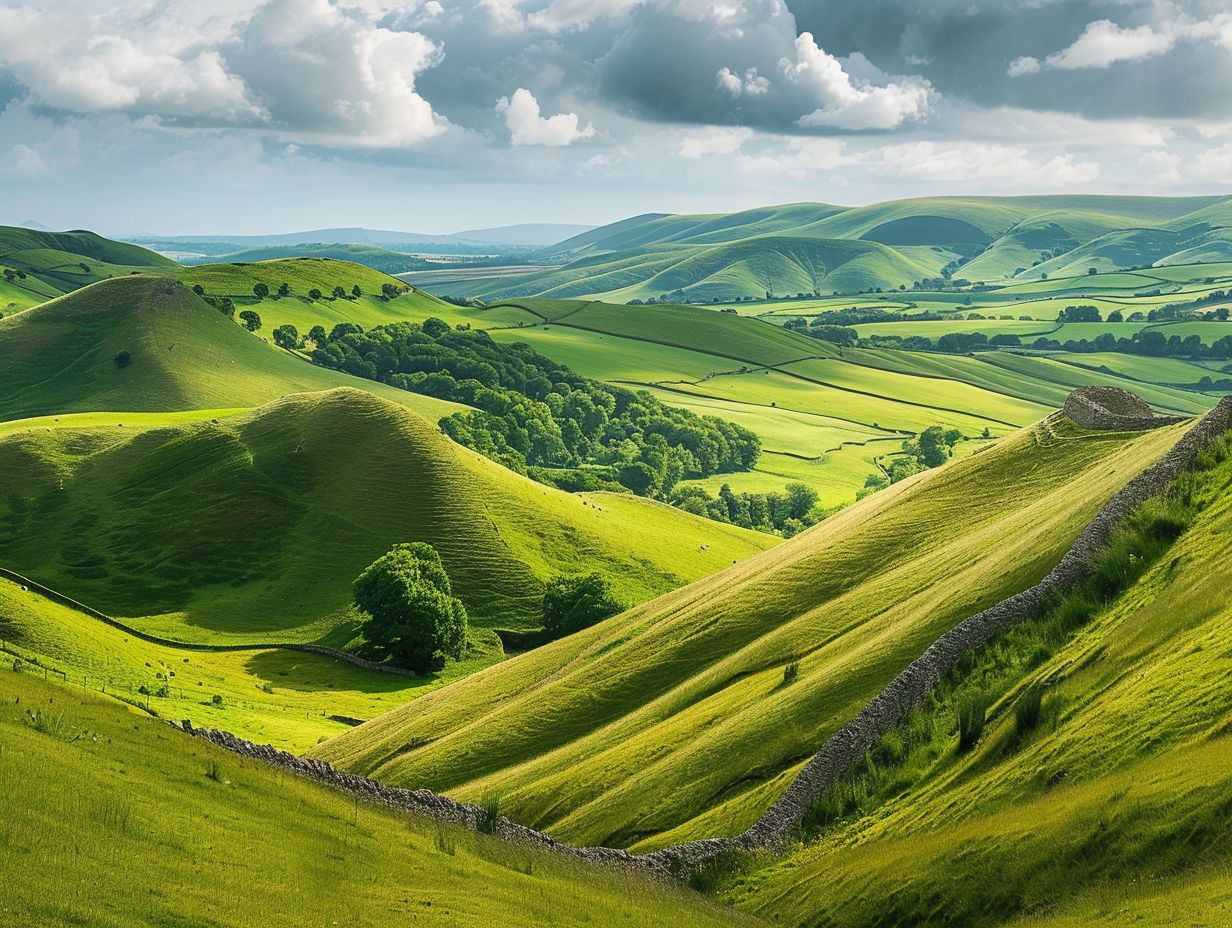
A Seasonal Guide To Hiking In The Peak District
Are you ready to lace up your hiking boots and explore the stunning landscapes of the Peak District? This seasonal guide will take you through

Hiking Challenges Preparing For Your First Ultrahike
Are you ready to take your hiking adventures to the next level? Ultra-hiking offers a unique combination of physical and mental challenges, breathtaking scenery, and
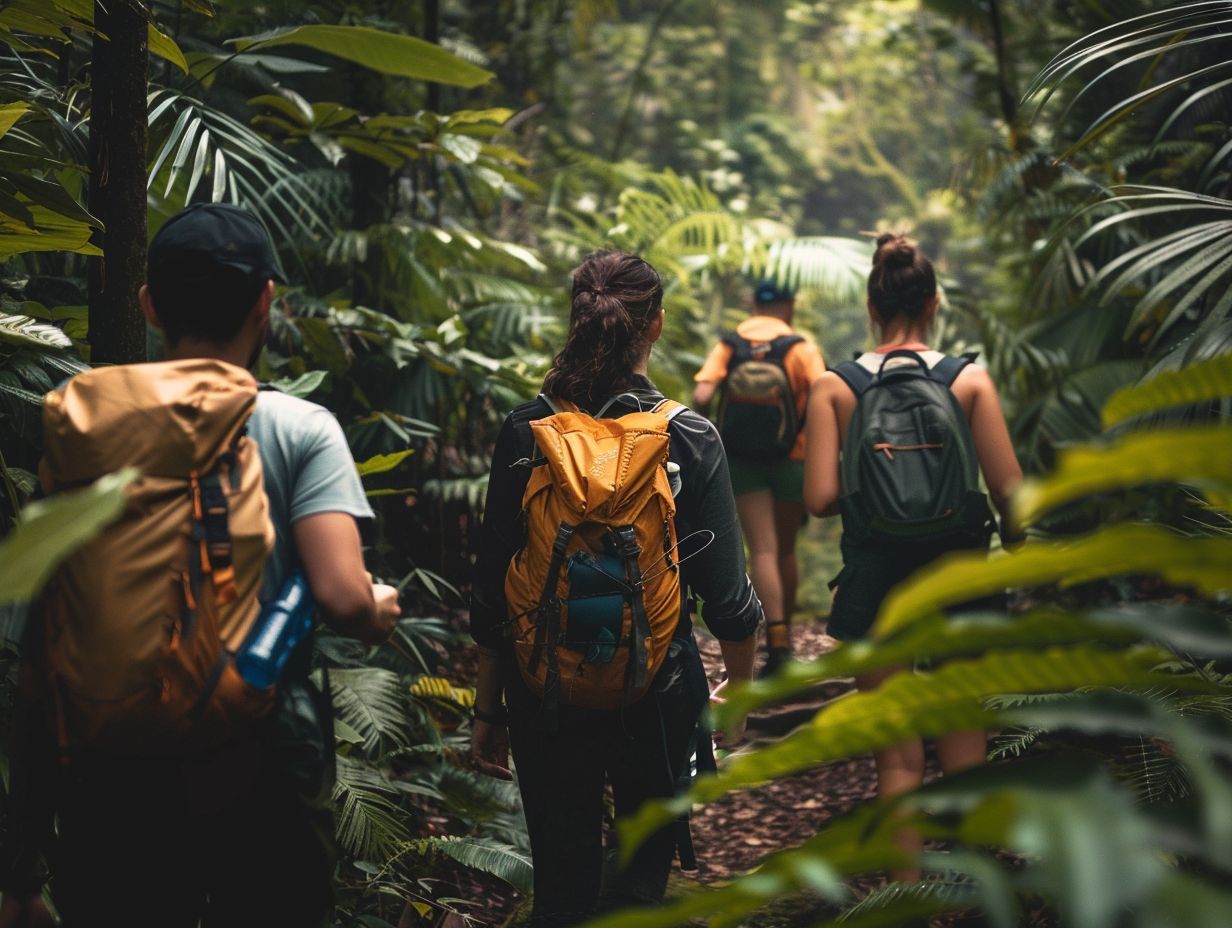
Ecofriendly Hiking Tips For Sustainable Adventures
Are you an outdoor enthusiast looking to minimise your impact on the environment while enjoying the great outdoors? Eco-friendly hiking is the perfect solution! We
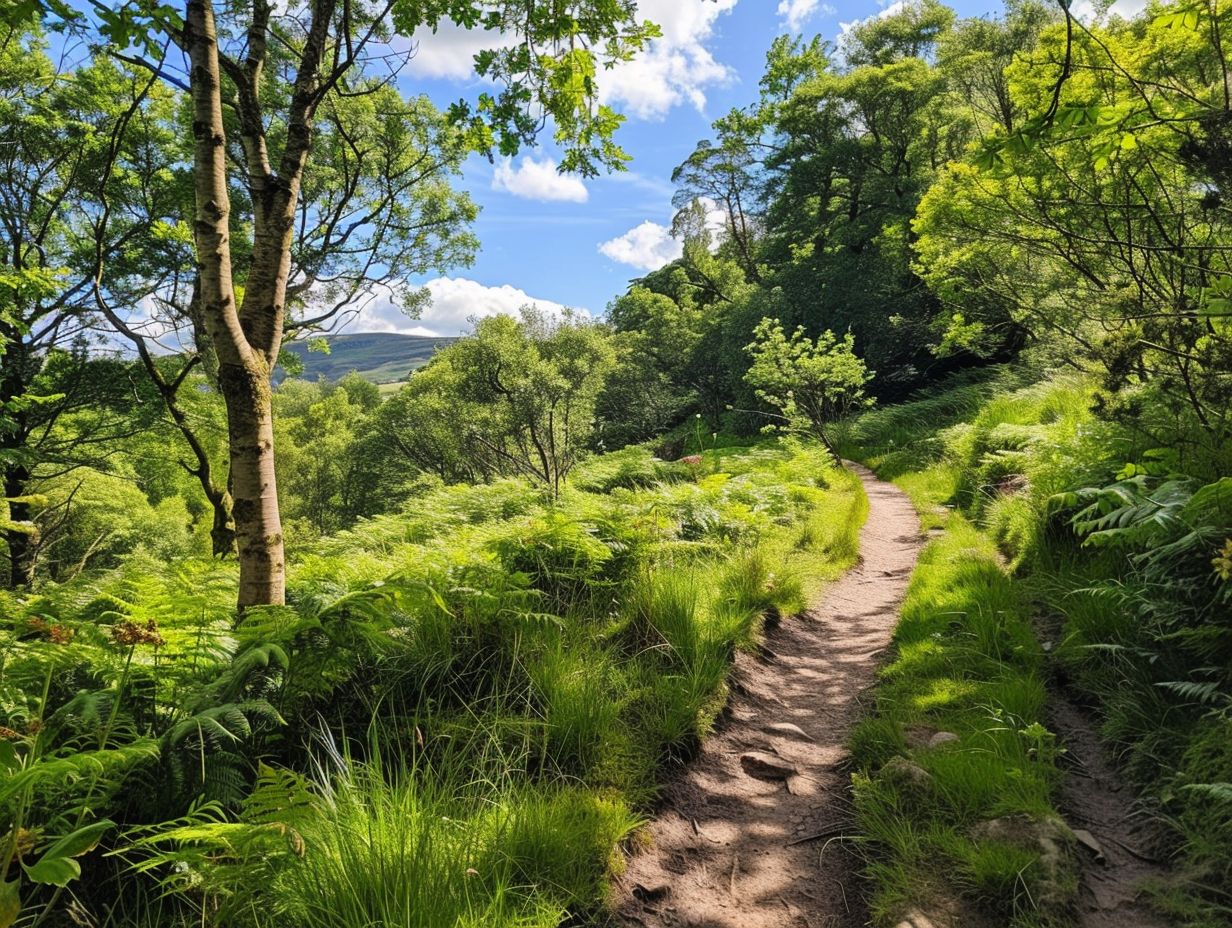
The Best Hiking Trails For Experiencing UK Wildlife
When exploring the picturesque hiking trails of the UK, you can expect to encounter a diverse array of wildlife. From majestic birds soaring overhead to

Wildflower Walks The Best Trails For Nature Lovers
Are you a nature lover looking to embark on a wildflower walk? Explore the best trails for wildflower walks, including [Trail Name 1], [Trail Name















